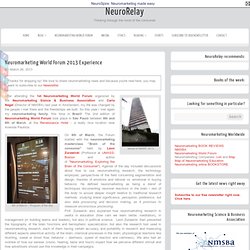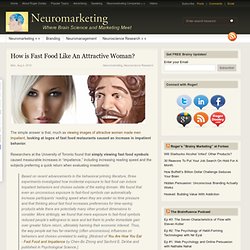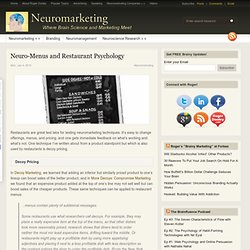

Neuromarketing World Forum 2013 Experience. Thanks for dropping by!

We love to share neuromarketing news and because you're new here, you may want to subscribe to our Newsletter. Venue of NMWF 2013 6th of March – Program of the day On 6th of March, the Forum started with the neuromarketing masterclass“Brain of the consumer” held by Leon Zurawicki (Professor at UMASS-Boston and author of “Neuromarketing, Exploring the Brain of the Consumer”). Agenda of the day included discussions about how to use neuromarketing research, the technology employed, perspectives of the field concerning segmentation and design, theories of emotions and rational vs. emotional in buying behavior.
Prof. Although marketing talks about the needs to be satisfied, the focus should be on the fulfillment of desires. Prof. Book of Prof. Track: Consumer decision makingProf. Next speaker had a short presentation about neuromarketing in politics research. Next track included presentations about how neuromarketing can build a better future for advertising. Prof. How is Fast Food Like An Attractive Woman? The simple answer is that, much as viewing images of attractive women made men impatient, looking at logos of fast food restaurants caused an increase in impatient behavior.

Researchers at the University of Toronto found that simply viewing fast food symbols caused measurable increases in “impatience,” including increasing reading speed and the subjects preferring a quick return when evaluating investments: Based on recent advancements in the behavioral priming literature, three experiments investigated how incidental exposure to fast food can induce impatient behaviors and choices outside of the eating domain. We found that even an unconscious exposure to fast-food symbols can automatically increase participants’ reading speed when they are under no time pressure and that thinking about fast food increases preferences for time-saving products while there are potentially many other product dimensions to consider. Neuro-Menus and Restaurant Psychology. Restaurants are great test labs for testing neuromarketing techniques.

It’s easy to change offerings, menus, and pricing, and one gets immediate feedback on what’s working and what’s not. One technique I’ve written about from a product standpoint but which is also used by restaurants is decoy pricing. Decoy Pricing In Decoy Marketing, we learned that adding an inferior but similarly priced product to one’s lineup can boost sales of the better product, and in More Decoys: Compromise Marketing we found that an expensive product added at the top of one’s line may not sell well but can boost sales of the cheaper products. These same techniques can be applied to restaurant menus: …menus contain plenty of subliminal messages.Some restaurants use what researchers call decoys. Priceless Prices Decoy menu items are far from the only neuro-strategy employed by clever restaurant operators. A study published in the spring by Dr. Aren’t All Eggs Farm Fresh? Design Details.
Six Characteristics of Highly Persuasive Stories. Best of Neuromarketing – 2012. It’s time for the annual ritual of picking the top Neuromarketing posts of 2012.

As in the past, the list is based on reader traffic – the posts listed had the most views, tweets, likes, etc. I’m a strong believer in crowdsourcing, so what better way to determine the best posts of 2012? Here are the dozen that came out on top: Six Characteristics of Highly Persuasive Stories One of the toughest persuasion tasks is convincing a jury in a courtroom. How to Write Taglines That Double Sales. Les neurosciences, facteur d'innovation des relations sociales. ( 1 Appréciation ) Détails Catégorie : Conversations Publié le samedi 1 décembre 2012 14:28 Écrit par Fabienne Marion Affichages : 272 {*style:<b> </b>*} Les systèmes humains vivent au sein d'équilibres qui sont en pleine mutation. Depuis longtemps, je pense que la collaboration, le travail en commun, est un sport très délicat. Cela m'a amené à partir de l'individu en interaction avec les autres : que peut-il se passer pour lui quand il est en train d'interagir et comment cette interaction va-t-elle perturber son cerveau ?
Depuis la nuit des temps, notre cortex cérébral se développe par l'augmentation des connaissances et des compétences humaines. L'intelligence collective en entreprise résulte des échanges entre un réseau de personnes capables de travailler ensemble pour produire de l'innovation rapidement et avec le plus de productivité possible. Les émotions – mouvements de l'être – sont à la source de la vie pour les neuroscientifiques. Oui, cela améliore la valeur des deux parties.